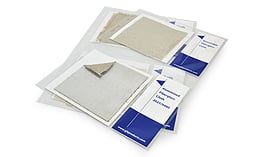Insulation can be classified in terms of both its type (including composition and internal structure) and its form (overall shape or application).
Insulation types
- Fibrous insulation is composed of small-diameter fibers that finely divide the air space. These fibers, which can be either perpendicular or horizontal to the surface being insulated, are sometimes bonded to each other. Fibers made of silica, rock wool, slag wool and alumina silica are used, but glass fiber and mineral wool fiber are the most widely used types.
- Cellular insulation is made up composed of small, individual cells. The cellular material may be glass, elastomeric, or foamed plastic such as polystyrene (extruded), polyurethane, polyisocyanurate, or polyolefin resins. Cellular insulation that prevents the passage of moisture is called closed cell insulation. Open cell insulation allows the passage of moisture.
- Granular insulation is composed of small nodules that contain voids or hollow spaces. It’s not considered a true closed cell material because it allows for the transfer of gas between the individual spaces. They can be produced as loose or pourable materials or can be combined with a binder and fibers to form a rigid insulation. Examples of granular insulation include calcium silicate, expanded vermiculite, perlite, cellulose, diatomaceous earth, and expanded polystyrene.
Insulation forms
With thermal insulation, form truly does follow function. Here are some of most widely used forms of insulation:
- Rigid boards, blocks, sheets, and preformed shapes such as pipe insulation, curved segments, lagging, etc. Cellular, granular, and fibrous types of insulation are produced in these forms.
- Flexible sheets and preformed shapes. Cellular and fibrous insulation can be produced in these forms.
- Flexible blankets or pads. Typically made of fibrous insulation. These are often removable and reusable.
- Cements (insulating and finishing). These combine fibrous and granular insulation with cement.
- Foam. Poured or froth foam is often used to fill irregular areas and voids. Spray foam is used on flat surfaces.


